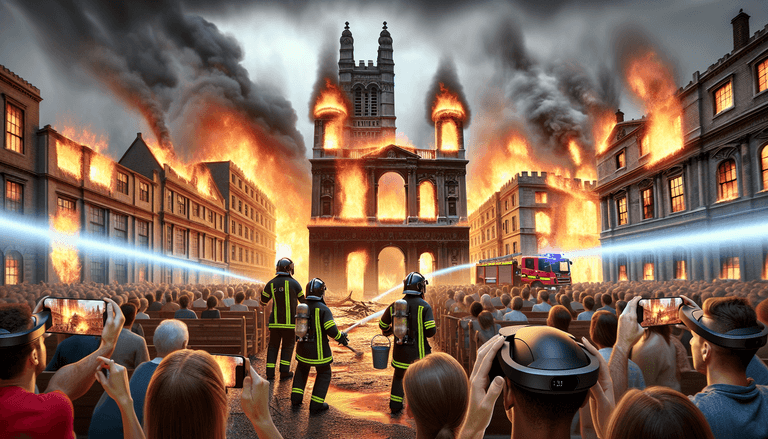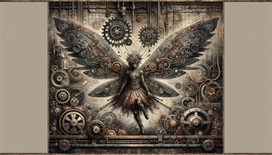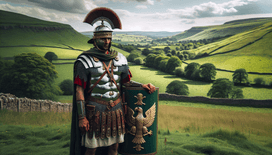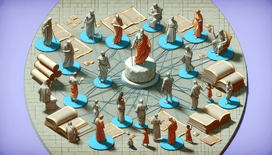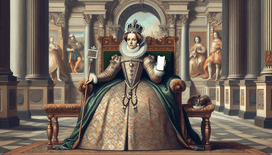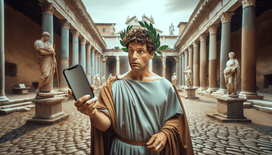Picture this: It’s 1666, a time when sausages were the true national treasure, cavaliers out-cavorted each other in a frenzy of fashion, and the city of London was, rather unfortunately, *lit*. Indeed, as the Great Fire swirled its way through the streets, one couldn’t help but wonder why there hadn’t been more of a heads up. I mean, a heads-up display at the very least. Well, folks, get ready to pop on some virtual lenses as we delve into a world where the Great Fire of London had the backing of augmented reality glasses.
An Eyewear Raising Idea
The Great Fire started rather innocently, like many things involving open flames, one baker, one oven, one mishap. Suddenly, the city was in turmoil. But what if the city’s denizens had each had a stylish set of augmented reality specs? Imagine, the eminent Lord Mayor Thomas Bloodworth might have gazed through his glasses during a saunter past Pudding Lane only to be met with a pop-up notification, "Hot Spot Alert: Your city is on fire!" Alas, in reality, Lord Bloodworth famously downplayed the very early stages of the blaze, claiming, "A woman could piss it out." Let’s face it - inaccuracies abound.
A Glimpse into the Future of Firefighting
With AR glasses, emergency responses would’ve been nothing short of magical. Directions overlaying the physical world could have guided the bucket brigade with precision. Dare I say, it would be a real step up from their somewhat haphazard grasp on basic fluid dynamics! Efficient runs to the River Thames and improved coordination, free from the blight of smoky confusion, may have saved more than just tweets by Charles II.
In my mind’s eye, I can see Samuel Pepys frantically swiping through his apps, er, journal, while eyes bulge behind his augmented frames: "Alarm: Flames approach quickly. God knows what we shall do... Recalculate." The sudden ability to forecast the reach and direction of the blaze would surely quell much hysteria among the populace. It does beg the question, though, would panic buying fire insurance have been any less chaotic?
Guided Tours Through the Chaos
AR technology would also have provided historical wanderers in blackened, smoke-choked streets with real-time routes to safety. Picture William, future Patreon-subscribing romantic poet or mere blacksmith, dodging burning timbers falling like disastrous snowflakes. His augmented reality setup issues a calming voice message, "Proceed north-west. Avoid Pudding Lane. You’re nearing Ye Olde Safety Zone." Imagine, a time of tragedy becoming a technologically orchestrated dance of survival. Who said digital was cold!
And think of the tourism! Once the fires were doused and the city rebuilt, the Great Fire could have become the arena for immersive AR history lessons. Hoards of future tourists might immerse themselves, walking side-by-side with restored sepia-toned artisans, thanks to collaborative AR spectacles recounting a city’s fiery fight for its very life.
AR Snapchat? Oh, the Humanity!
As much fun as bulldozing through such an alternate reality can be, there’s more than a kernel of truth in the notion that modern technology could modify collective experiences dramatically. However, I must warn against venturing too far into virtual streams. As humorous as it is imagining Pepys sharing fire-related groundbreaking snaps to a local friend group, "Just baking... Best excuse for rude letter writing ever", it’s important to steer our narrative ship back to the source of all this mayhem.
So, what happens when we give historical tales the tools of today? The answer, my dear reader, might just be a merrily augmented vision of our great capital, one grappling with infernos both great and small, but aided by a more techno-savvy brigade. The heart lies in learning with a wink, at times setting aflame dusty old chronicles and fanning the embers of an entirely new way of seeing history. It’s all about the right lenses, wouldn’t you agree?
